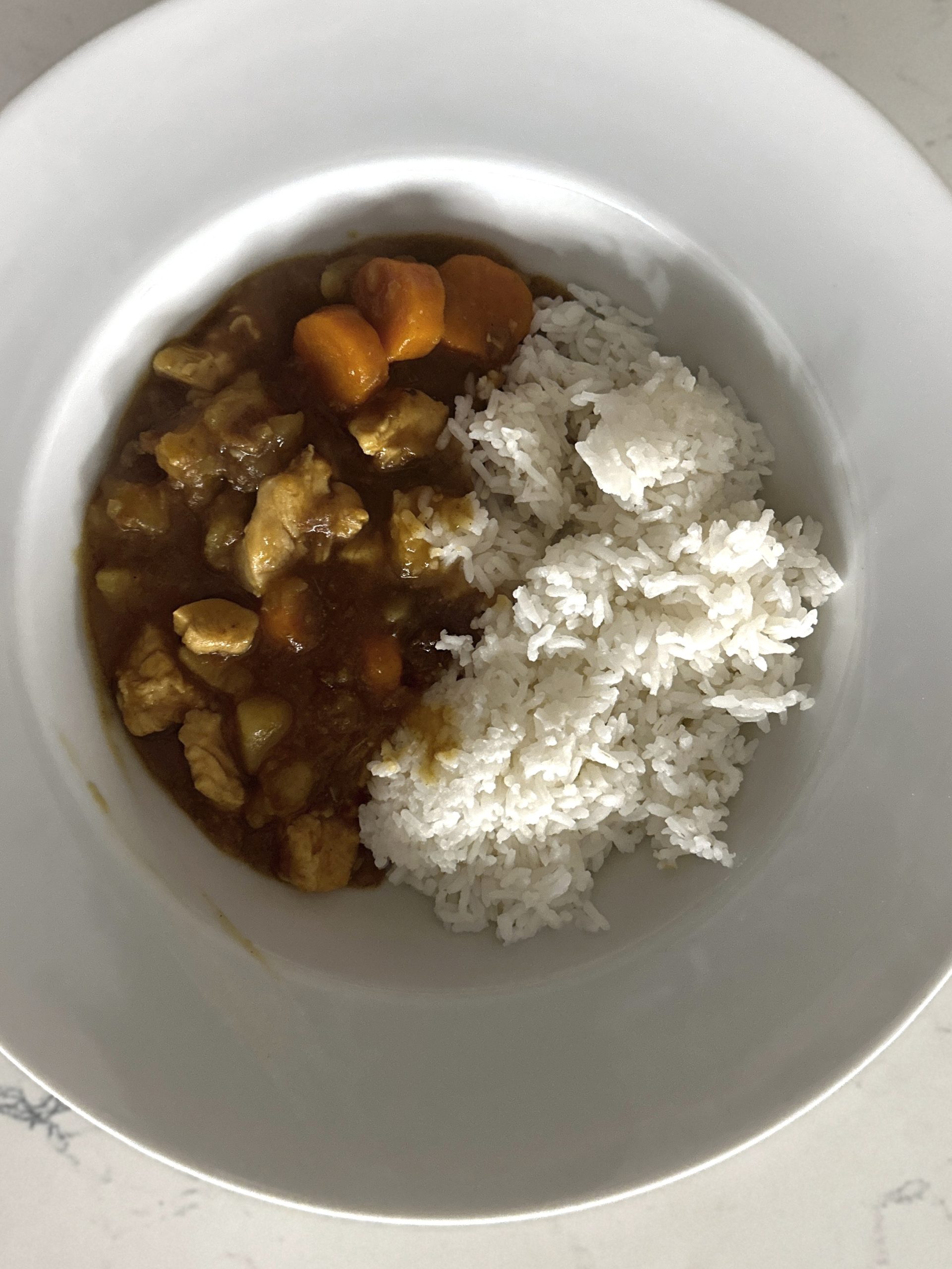
Worldwide Food Tour – Japan
Kare Raisu (カレーライス), or Japanese curry rice, is one of Japan’s most beloved comfort foods. Unlike the spicier, more complex curries of India or the fragrant coconut-based curries of Thailand, Japanese curry is mild, thick, slightly sweet, and deeply savory, served with steamed rice and often accompanied by crispy fried cutlets.
Kare Raisu is a staple of home cooking, found everywhere from family kitchens and school cafeterias to train stations and military mess halls. Its rich, velvety sauce and satisfying depth of flavor make it a go-to meal for all ages in Japan.
The History: A British-Indian Influence Turned Japanese Staple
Though curry is often associated with India, Japanese curry has its roots in British naval cuisine. During the late 19th century (Meiji Era), the British Royal Navy introduced a thickened, stew-like curry to Japan via the Imperial Japanese Navy, which adopted it as a nutritious, easy-to-make dish for their sailors.
Unlike Indian curries, which use a blend of dry spices, British-style curry was made with a roux (flour and fat mixture) to thicken the sauce, making it closer to a stew than a traditional curry. Over time, Japan adapted this into Kare Raisu, using pre-made curry roux blocks for convenience, which are now found in every Japanese grocery store.
By the 20th century, Japanese curry had spread beyond naval kitchens and into homes, restaurants, and school lunches, becoming one of Japan’s most popular and enduring dishes.
What is Kare Raisu?
Kare Raisu consists of three main components:
- The Curry Sauce: A thick, mildly spiced, slightly sweet curry gravy made from curry roux, onions, carrots, potatoes, and meat (often beef, chicken, or pork).
- Steamed White Rice: Traditionally short-grain Japanese rice, which holds its shape well and pairs perfectly with the rich sauce.
- Toppings and Garnishes: Often served with pickled vegetables (fukujinzuke or rakkyo) and sometimes paired with crispy fried cutlets (Katsu Kare).
Essential Ingredients of Japanese Curry:
- Curry Roux (カレールー): The key to the dish’s signature taste, available in mild, medium, or spicy varieties.
- Meat: Usually chicken, beef, or pork, though seafood or vegetable versions exist.
- Onions, Carrots, and Potatoes: The classic trio, giving the dish sweetness and heartiness.
- Apple, Honey, or Chocolate (Optional): Some recipes add grated apple, honey, or dark chocolate for a subtle sweetness and depth.
- Soy Sauce and Worcestershire Sauce: Enhance the umami richness of the curry.
Tasting Notes: A Mild, Sweet, and Comforting Curry
Japanese Kare Raisu is thicker, milder, and sweeter than Indian or Thai curries.
- The curry sauce is rich and velvety, with a consistency similar to gravy or stew.
- The flavors are slightly sweet, umami-rich, and gently spiced, making it accessible even for those who dislike heat.
- The vegetables absorb the curry’s depth, adding layers of texture and natural sweetness.
- The rice provides a neutral base, soaking up the sauce beautifully.
A well-made Kare Raisu is deeply comforting and nostalgic, bringing back childhood memories for many Japanese people.
How Kare Raisu is Served
Japanese curry is a versatile dish enjoyed in various forms:
1. Classic Kare Raisu (カレーライス) – The Standard Plate
- Served with steamed white rice, sometimes with pickled vegetables (fukujinzuke).
- The curry is ladled over the rice, forming a half-and-half plate.
2. Katsu Kare (カツカレー) – Curry with Crispy Fried Cutlet
- A popular variation where a breaded and deep-fried pork or chicken cutlet (tonkatsu or chicken katsu) is placed on top of the curry.
- The crispy cutlet adds a crunchy contrast to the rich sauce.
3. Kare Udon (カレーうどん) – Curry-Flavored Udon Noodles
- The curry sauce is thinned into a soup-like consistency and served over chewy udon noodles.
4. Kare Pan (カレーパン) – Curry-Stuffed Bread
- A deep-fried Japanese curry-filled bread roll, often found in bakeries.
Kare Raisu is often eaten with a spoon rather than chopsticks, as the thick sauce coats the rice perfectly.
Why Japanese Curry is a National Favorite
✔ Mild, Rich, and Comforting – Perfect for those who prefer a gentle, non-spicy curry.
✔ Easy to Make – With pre-made curry roux blocks, it’s a simple one-pot meal.
✔ Highly Customizable – Can be made with chicken, beef, pork, seafood, or even vegetarian options.
✔ Deeply Nostalgic – A dish that Japanese people associate with home, childhood, and family meals.
✔ Perfect for All Ages – Loved by both kids and adults, making it a staple in schools and homes.
From busy weeknight dinners to comforting rainy-day meals, Kare Raisu is Japan’s ultimate home-cooked dish.